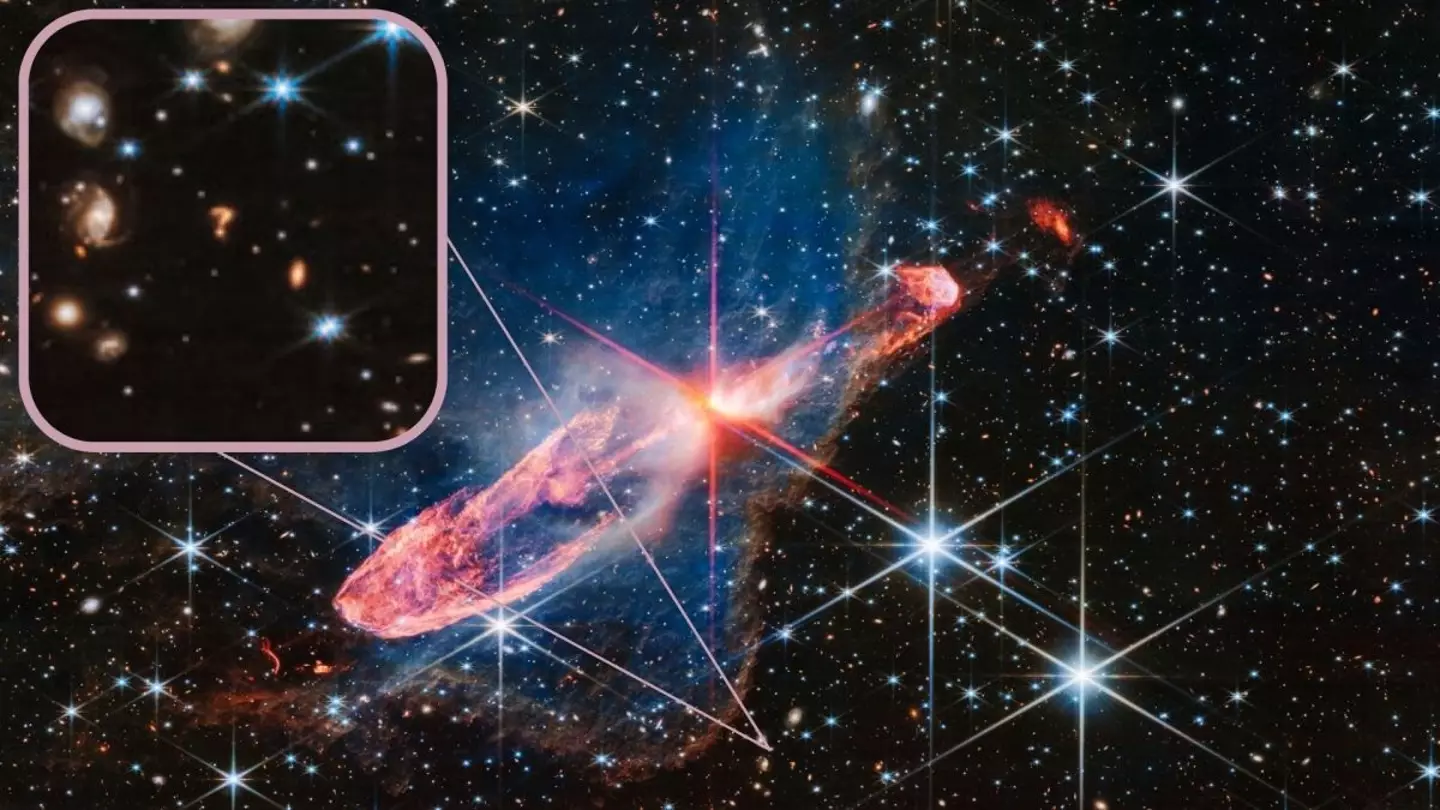
The James Webb Space Telescope has provided many answers about deep space.
But now it has posed a question.
Well...kind of.
The telescope has captured what looks like a question mark in the depths of space, close to a pair of young stars called Herbig-Haro 46/47.
Advert
The James Webb Space Telescope (JWST) team at the European Space Agency (ESA) released an image that offers the most detailed look yet at the two actively forming young stars that are located 1,470 light-years from Earth in the Vela Constellation.

In the image, the stars are surrounded by a disk of material that 'feeds' them as they grow for millions of years.
And just below those stars, in the background, is an object resembling a giant cosmic question mark.
Advert
But what could space be asking us?
Perhaps it's wondering why Elon Musk has changed Twitter to X.
Or whether Barbie or Oppenheimer won at the box office. Or maybe it wants to know the answer to the greatest question of our time: who is the best Hollywood Chris?
Unfortunately, experts say the question mark could simply show two merging galaxies, with one being stretched out by the gravity of the other.
Matt Caplan, an assistant professor of physics at Illinois State University, told Space.com: "The two distinct features could easily be merging galaxies in the background, with the upper part of the question mark being part of a larger galaxy getting tidally disrupted."
Advert
He continued: "Given the colour of some of the other background galaxies, this doesn't seem like the worst explanation. Despite how chaotic mergers are, double lobed objects with curvy tails extending away from them are very typical."
Dr Stephen Wilkins, head of astronomy at the University of Sussex, told the Daily Mail that most galaxies look like 'a blob from a distance'.
"However, just like clouds, if you look at enough of these, you'll find some which look recognisable, and seeing a question mark in the universe is undeniably very cool," he said.
"I am sorry to tell people it's probably not a message to humanity - but it does show the amazing ability of this telescope to explore our universe as never seen before."
Advert
I don't know, I still believe space has a few questions for Musk.
Topics: News, Space, World News
